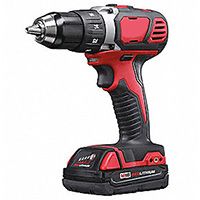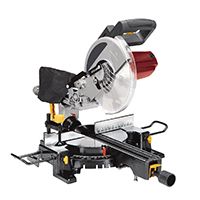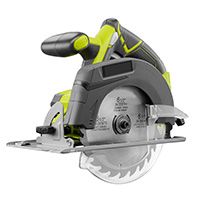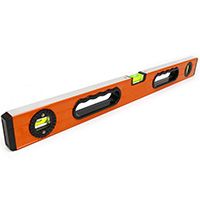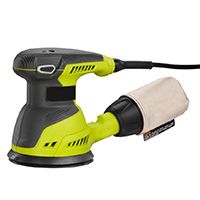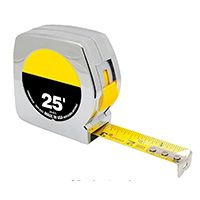We may be compensated if you purchase through links on our website. Our team is committed to delivering honest, objective, and independent reviews on home products and services.
A well-constructed deck railing not only provides security for you and your family but also adds visual appeal to your outdoor area. In the video above, This Old House carpenter Nathan Gilbert shows a homeowner how to plan, build, and install a deck railing from start to finish. This guide will walk you through the process so you can feel prepared to tackle this project.
Materials Needed for Deck Railing Construction
Building a deck railing requires several materials and tools and the right wood species.
Wood
The wood species you choose for your deck railing will impact its longevity and appearance. Popular wood options for outdoor decks include fir, pressure-treated wood, cedar, and redwood. Gilbert selected fir for this project, which offers several advantages:
- Water-resistant properties: Fir wood is known for its natural resistance to moisture, making it an ideal choice for outdoor applications like deck railings. This water-resistant quality helps to prevent rot, decay, and warping—common issues in outdoor wood structures exposed to the elements.
- Excellent paint adhesion: One of the key advantages of fir is its ability to hold paint well. The wood’s fine, even texture allows paint to adhere smoothly and evenly for a polished, professional finish.
- Straight grain for a clean look: This wood species typically has a straight, uniform grain pattern, which contributes to a clean and attractive appearance. This straight grain also makes the wood easier to work with during construction.
For your project, you’ll need:
- 2×2-inch stock for the balusters
- 4×4-inch stock for the posts
- 2×4-inch stock for the top and bottom of the railing
Tools and Safety Equipment
Having the right tools on hand will make the construction process smoother. Here are the tools we recommend for this project:
- Circular saw
- Drill
- Ear protection
- Level
- Measuring tape
- Miter saw
- Primer sealer spray
- Safety glasses
- Sander
- Stainless steel screws
- Structural screws
Preparing for Railing Installation
Before you start building your railing, there are a few preparatory steps to take.
Removing Existing Deck Boards
To properly install the new railing posts, you’ll need to remove some deck boards. Locate the screws securing the boards and use a drill to remove them carefully. Gently lift the boards to expose the underlying structure.
Measuring and Marking
Use a 2-by-4 to project the upper post position. Plumb a level from the stringer to mark the notch location and measure the distance from the stringer to determine the notch depth.
Ensuring Code Compliance
Confirm your railing meets local building codes. Check with your local building authority for specific regulations regarding height, spacing, and materials. Adherence to these codes will ensure your railing is safe and legal.
Building the Railing Posts
The posts are the foundation of your railing system. Here’s how to prepare and install them:
- Cut the 4-by-4 posts to your desired height.
- Notch the bottom of each post according to your measurements.
- Create a decorative top by making 45-degree cuts around the upper end of each post.
- Drill pilot holes at the bottom of each post.
- Position the post so that it’s level and plumb.
- Secure the post using structural screws.
Before attaching the posts to the deck, you can apply a coat of primer and paint or sealer. This will protect the wood from the elements and increase the longevity of your railing.
Constructing the Railing Frame
The railing frame provides the structure for your balusters. Here’s how to cut the rails and prepare the balusters:
- Lay two 2-by-4 pieces on the stair treads to determine the correct angle and length.
- Mark where they meet each post.
- Cut the top and bottom rails to size using a miter saw.
- Cut balusters to length, matching the angle of the rails.
- Space balusters no more than 4 inches apart to meet code requirements.
- Prime the ends of balusters and rails to prevent moisture damage.
Assembling and Installing the Railing
With all the components prepared, it’s time to put everything together. Lay out balusters on the bottom rail, and secure them to the bottom rail with stainless steel screws. Attach the top rail to the balusters, creating a sturdy unit.
Position the assembled railing between the posts. Check that it’s level and plumb. Secure the railing to the posts using stainless steel screws.
Adding Handrails (Optional)
For an added touch of elegance and functionality, consider adding a top handrail. This can be done using a rounded or decorative piece of wood secured to the top rail. Attach it firmly and at a comfortable height for use.
Deck Railing Finishing Touches
To complete your deck railing project, follow these steps:
- Sand any rough edges or surfaces.
- Apply a coat of primer to all exposed wood.
- Paint or stain the railing to match your deck and protect the wood.
- Add decorative elements such as post caps or finials to enhance the finished look.
Regular Maintenance
Maintaining your deck railing regularly can extend its lifespan and keep it looking fresh. Inspect the railing annually for any signs of wear or damage, and reapply paint or stain as needed.
Expert assistance with this segment was provided by William C. Gilbert Carpentry.
